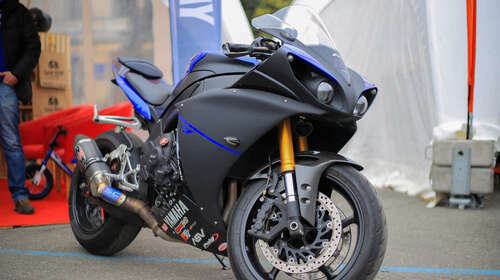
At 998cc, the original YZF-1000 R1 was a bold venture into its engine category. That engine, in fact, was a DOHC four-cylinder — enabling the model to reach a maximum of 148 horsepower and 172 mph. Packing all of this in its sleek and (relatively) slender body was quite the engineering feat, but another aspect of the YZF-R1 that would elevate it further was its handling.
Motorcycles with powerful engines don’t necessarily need to be intimidatingly heavy. By extension, such models don’t need to be unwieldy to control either. In the specific case of the YZF-R1, Ken Nemoto quotes Yamaha‘s Yoshitaka Kojima as explaining, “it’s by no means a highly rigid chassis. We had actually tried to create a rather low level of rigidity.”
The unique placement of the bike’s components comes into play here too, Nemoto explains, as the rigidity of the R1’s body was balanced to heighten its performance both in turns and on straight stretches.
The layout is known as Yamaha’s Deltabox frame, an adaptation of the diamond frame concept in which the front and back wheel’s output is respectively concentrated on the front and back of the frame. This adaptable setup had already been established in Yamaha supersports models for over a decade before the R1’s arrival, and several of the R1’s qualities would influence the industry afterwards.

